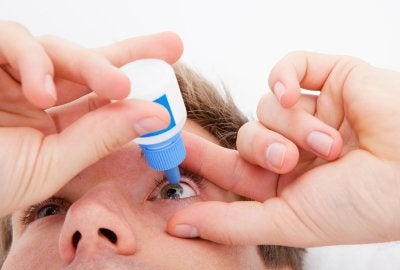Dry eyes are not typically a serious condition, but they can be extremely uncomfortable. If you are suffering from dry eye symptoms near Manchester, it could be time to see your eye doctor. There are several ways to control this eye disease, and your doctor can help you pick the right one for you. If you have dry eye syndrome, here are some of the ways your eye doctor may help your treat your symptoms.
Artificial Tears 
Artificial tears and other lubricating eye drops help to restore moisture levels in your eyes to make them less scratchy and irritated. Some of these drops are available over the counter, while others must be prescribed by your eye doctor. Typically, artificial tears and lubricating drops are best suited for treating mild dry eye symptoms. If you find yourself relying on over-the-counter artificial tears excessively, talk to your eye doctor. There may be prescription formulas that would provide you with more relief.
Restasis
Restasis is a prescription eye drop that can be used alone or in conjunction with over-the-counter artificial tears. In addition to providing moisture to your eye, Restasis helps to reduce inflammation and boost your body’s ability to produce natural tears. Although Restasis is effective for many people with dry eyes, it is not immediately effective. Most people need to make Restasis part of their eye care regimes for 90 days before getting the best results.
Steroid Eye Drops
Steroid eye drops can be used in conjunction with other treatments to control inflammation. Most people with dry eyes have some kind of eye inflammation, even if other symptoms are not present. Steroid eye drops can be used for a short period to reduce inflammation and boost the effectiveness of longer-term treatments like Restasis. Your eye doctor will closely manage your use of steroid drops to avoid complications associated with long-term use, including high eye pressure and cataracts.
IPL
IPL, or intense pulsed light therapy, treats the source of dry eyes to prevent symptom flare-ups. After an initial three to five minute treatment, patients can experience long-term symptom relief without medications with only one or two maintenance treatments per year.

